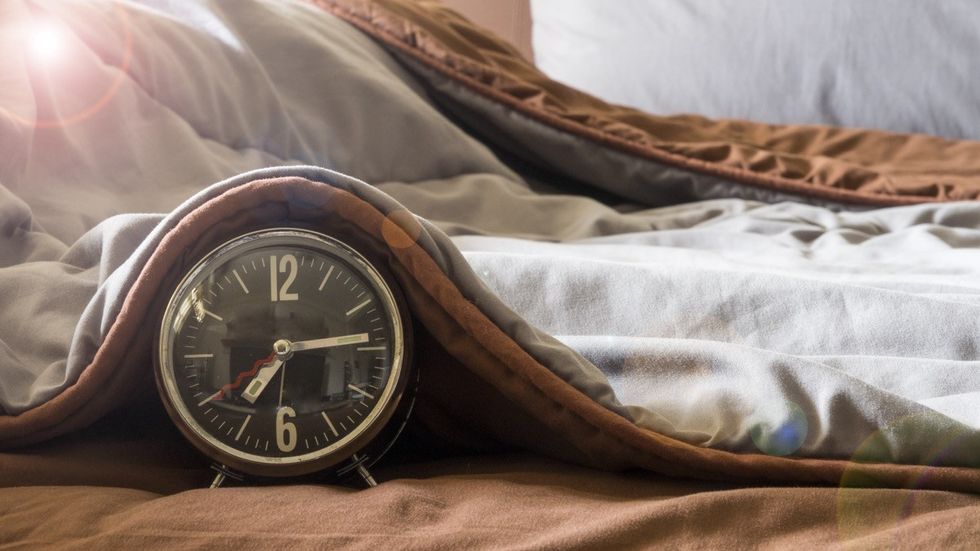Mark your calendars: on Sunday, Nov. 3, at 2 a.m., daylight saving time will end, and standard time will start. (Yes, it’s daylight saving time, not “savings.”) For many people, this also means gaining an extra hour of sleep as we collectively turn back our clocks one hour. However, experts say that it’s not as simple as feeling more refreshed after snagging more time in bed. The transitions to and from daylight saving can interrupt your sleep schedule and even affect your mood, some research shows.
RELATED: This Uncommon Supplement Can Improve Your Sleep and Mood, New Study Says.
In particular, a recent survey of 2,000 people recently revealed that 40 percent of Americans get the “Daylight Saving Scaries” when preparing to fall back an hour. Rather than resting easy, people reported feelings of persistent dread in the days leading up to the transition, as well as the days that followed. Thirty-seven percent reported needing more sleep to feel rested in the weeks after the time transition.
“During daylight saving time, we tend to go to bed and fall asleep later at night, resulting in sleep loss. The spring and fall time changes also can disrupt our sleep schedule and have a negative effect on the quality of our sleep,” says the American Academy of Sleep Medicine (AASM).
The professional society continues, “The daylight saving time changes can be especially problematic for any populations that already experience chronic insufficient sleep or other sleep difficulties. Populations at greatest risk include teenagers, who tend to experience chronic sleep restriction during the school week, and night shift workers, who often struggle to sleep well during daytime hours.”
To prevent the transition from messing with your sleep this year, focus on getting the right total number of sleep hours (ideally seven to nine for adults), adjust your other daily routines—including mealtimes—before the transition, set your clock back on Saturday evening, and go to bed at your normal bedtime that night.
It’s also a good idea to use light and darkness cues to help your body adjust to your new schedule. “In the fall, minimize light exposure until your target morning wake time. Adjusting your exposure to light and darkness will help set your body clock, which regulates the timing of sleep and alertness,” the AASM suggests.
RELATED: 25 Tips to Fall Asleep Fast, According to Science.
Sleep specialist Jessica Cho, MD, also notes that you can make incremental schedule changes to ease the transition and preserve better sleep.
“If your normal wake-up time is 8 a.m., then wake up tomorrow at 8:30 and get some sunlight from 9 to 9:30,” she said in a TikTok post on the eve of daylight saving in March 2022. “The next day, wake up at 8 and get some sunlight from 8:30 to 9. If you normally have a harder time transitioning over, then try it in increments of 15 minutes. So, 8:45 tomorrow, 8:30 the next day, and 8:15 the next day.”
Cho adds that exercising earlier in the day and drinking “a little less caffeine than you normally would” can also help you feel better rested as we shift away from daylight saving.
If the AASM and other sleep organizations get their wish, we may someday soon switch to a system that eliminates daylight saving time altogether. For now, focus on taking active steps to preserve your quantity and quality of sleep.

